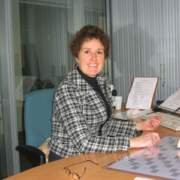Paediatric cancer and imaging
According to World Health Organisation data, cancer accounted for 13% of all deaths globally in 2008. Largely because age is a fundamental and unmodifiable risk factor, and the average age of the world population is rising, deaths from cancer are projected to increase to over 11 million per annum by 2030. However on world cancer day earlier this month the really good news was that the survival of children with solid tumours has increased from 30% up to 90% within four decades. Of course this dramatic improvement is the result of multidisciplinary efforts involving more effective treatment as well as diagnosis, but improved imaging techniques have played an enormous role in the continually improving survival rate.
The imaging techniques used at diagnosis, and for evaluating tumour response during and after therapy as well as before and after resection, include ultrasonography, CT, MRI, PET or combinations of these modalities, depending on local conditions and the healthcare professionals involved. But in spite of the developments in modern imaging, which are inexorably lowering the dose of radiation to which patients are exposed during procedures, imaging does involve potentially dangerous ionising radiation that may induce other cancers in later life. There is a small, but crucially not zero risk, one which is greater in paediatric patients. An article published last month by authors from the Harvard and Johns Hopkins medical schools reported that in the USA CT scans are proliferating, with seven to eight million per year being performed on paediatric patients. The authors state that many of these paediatric scans are either not justified or could be carried out with imaging techniques involving lower or no radiation, such as MRI and ultrasonography. Should a CT scan really be indicated, paediatric CT protocols should be optimised based on the patient


